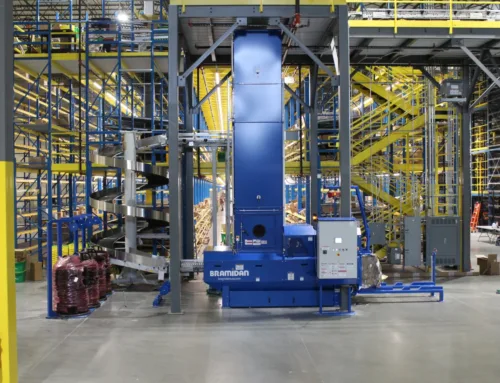
Understanding the complexities of commercial liquidation services is crucial for any business facing financial challenges. Many organizations might think that liquidation is solely a last resort; however, recognizing its potential benefits can lead to effective asset recovery. This article will cover the importance of commercial liquidation, the key steps in the liquidation process, and the legal framework that governs it. Readers will gain insights into how customized solutions from experts like End2End Logix can simplify this process, ultimately addressing common pain points and ensuring maximum value recovery in difficult times.
Define Commercial Liquidation and Its Importance

commercial liquidation services refer to the process of selling off a company’s assets to pay debts or facilitate business closure, particularly in cases of insolvency. This process is crucial for shareholders as it allows for the recovery of value from ownership stakes. Different types of commercial liquidation services exist, each tailored to specific circumstances with customized solutions, ensuring that the liquidation process aligns with legal requirements and stakeholder interests.
Introducing the Concept of Commercial Liquidation
Commercial liquidation involves not only the selling of physical assets but also the careful management of a company’s intangible assets, such as intellectual property. Licensed insolvency practitioners play a critical role in this process by ensuring adherence to relevant policies while maximizing the recovery value for creditors and stakeholders. Understanding these elements helps businesses navigate liquidation efficiently and effectively through commercial liquidation services and customized solutions, ensuring that they can address any outstanding credit obligations and make informed decisions regarding their commercial property.
- Understanding the roles of licensed insolvency practitioners.
- Recognizing the importance of intellectual property in asset recovery.
- Identifying the policies that govern commercial liquidation.
- Assessing the value of commercial property in liquidation circumstances.
- Establishing effective communication with creditors during the process.
Recognizing the Role of Liquidation in Business Closure
Liquidation plays a pivotal role in business closure, particularly when a company faces foreclosure or insolvency. By employing the expertise of an insolvency practitioner, businesses can effectively manage their assets, including accounts receivable and physical goods, through organized methods such as online auctions and customized solutions. Additionally, partnering with commercial liquidation services like end2end logix can maximize asset recovery and align with regulatory standards, ensuring that all financial obligations are addressed in a structured manner, ultimately allowing for a clear resolution of the business’s affairs:
- The significance of engaging an insolvency practitioner.
- The process of conducting online auctions for asset recovery.
- The role of accountants in managing financial records during liquidation.
- Strategies for handling accounts receivable effectively.
- The importance of transparency and communication with stakeholders.
Understanding the Different Types of Commercial Liquidation
Understanding the different types of commercial liquidation is essential for corporations facing financial challenges. Each type, such as voluntary and compulsory liquidation, addresses specific circumstances and reflects the nature of the corporation‘s debt and liabilities. By determining the appropriate liquidation type, businesses can better align their strategies with market value recovery and ensure that stakeholders’ interests are safeguarded throughout the process.
Liquidation often stems from difficult choices. Understanding the reasons behind it reveals crucial insights for any business facing uncertain times.
Identify the Common Reasons for Commercial Liquidation

Identify the Common Reasons for Commercial Liquidation
Financial distress often serves as a primary factor for commercial liquidation, compelling businesses to evaluate their ability to meet obligations. Market changes can influence decisions, impacting customer satisfaction and overall demand. Additionally, strategic liquidation may be initiated for business reorganization, aiming to recover fair market value while mitigating risks associated with asset management.
Financial Distress as a Primary Factor
Financial distress is a primary factor that often triggers commercial liquidation. Businesses may find themselves unable to meet their mortgage obligations or fulfill existing contracts, leading to potential insolvency. Understanding these financial pressures is crucial as they directly impact a company’s cash flow, warranting the need for decisive action to recover value from assets before stakeholders face further losses.
- Businesses may be unable to meet mortgage payments.
- Failure to fulfill contracts can prompt liquidation proceedings.
- Cash flow issues can escalate, necessitating immediate asset recovery.
- Warranties or guarantees might be invoked during liquidation.
- Addressing financial distress promptly can protect stakeholder interests.
Market Changes and Their Impact on Liquidation Decisions
Market fluctuations significantly influence liquidation decisions for businesses. For instance, a sudden downturn in customer demand can compel a company to consider its options, including liquidation, to recoup losses from equipment or inventory. Engaging a lawyer can facilitate this process, ensuring that all legal aspects are covered, such as the handling of security deposits or outstanding contracts.
- Understanding market fluctuations can inform liquidation strategies.
- Declining customer demand presents challenges for ongoing operations.
- Expert legal counsel can ensure compliance throughout the liquidation.
- Addressing issues with equipment and inventory is critical for recovery.
- Evaluating available options early can help mitigate potential losses.
Strategic Liquidation for Business Reorganization
Strategic liquidation for business reorganization often arises from financial distress, where a company seeks to minimize legal liability while ensuring regulatory compliance. By considering a company voluntary arrangement (CVA), businesses can manage their debts and restructure operations effectively, allowing them to recover assets while adhering to legal frameworks. This process not only aids in stabilizing the company but also repositions it for future growth and success.
Understanding the reasons behind liquidation lays the groundwork for what comes next. It is essential to recognize the legal matters that shape how businesses can navigate this challenging process.
Outline the Legal Framework for Commercial Liquidation

Comprehending applicable laws and regulations is essential for effective commercial liquidation, guiding the overall process. Understanding the role of liquidators and their responsibilities ensures clarity in asset management, including property and inventory. Key legal steps in the liquidation process reveal the importance of negotiation and risk assessment, laying the foundation for a thorough and compliant approach.
Comprehending Applicable Laws and Regulations
Comprehending the applicable laws and regulations surrounding commercial liquidation is vital for businesses navigating this complex process. Research into local laws helps identify requirements for notifying creditors and addressing any existing lease agreements that may impact asset recovery. Engaging legal counsel can provide insights into potential fees and judgments that could arise, ensuring that businesses manage all legal obligations efficiently while attempting to maximize asset demand and recovery solutions.
Understanding the Role of Liquidators and Their Responsibilities
Liquidators play a critical role in the commercial liquidation process, employing their knowledge to navigate complex legal landscapes while maximizing the recovery value for a company’s creditors. They leverage their expertise to assess the price of assets accurately, ensuring that any collateral can be efficiently converted into cash. By communicating effectively with all stakeholders, liquidators help protect creditor interests, facilitating an organized process that addresses financial obligations while optimizing asset recovery.
Key Legal Steps in the Liquidation Process
Key legal steps in the liquidation process are integral to ensuring compliance and maximizing asset recovery. The involvement of a liquidator, who oversees the sale of office furniture and other assets, is necessary to guarantee that secured creditors are prioritized according to legal obligations. Utilizing methods such as auction and recycling strategies not only enhances the value realized from the assets but also addresses sustainability concerns, benefitting both the company and the community:
- Engagement of a qualified liquidator to manage the process.
- Assessment of all assets, including office furniture.
- Prioritization of claims from secured creditors.
- Implementation of auction strategies for effective sales.
- Incorporation of recycling methods to promote sustainability.
With the legal framework in place, the path forward becomes clearer. Next, the steps in the commercial liquidation process will reveal how to efficiently navigate this essential journey.
Explore the Steps Involved in the Commercial Liquidation Process

Conducting a valuation of business assets is the first essential step in the commercial liquidation process, ensuring an accurate assessment of worth. Following this, notifying stakeholders and creditors fosters transparency and secures their consent for the proceeding steps. Finally, advertising the liquidation sale effectively reaches potential buyers while mitigating the risk of fraud, promoting an organized approach to asset recovery.
Conducting a Valuation of Business Assets
Conducting a valuation of business assets is a fundamental step in the commercial liquidation process, as it establishes the financial worth of various asset types. Accurate valuation aids in debt settlement, ensuring that creditors have a clear understanding of the potential recovery value available during liquidation. Utilizing professional appraisers or licensed insolvency practitioners can significantly enhance this process by providing expert assessments that align with market conditions, making it possible for businesses to maximize asset recovery effectively.
Notifying Stakeholders and Creditors
Notifying stakeholders and creditors is a fundamental step in the commercial liquidation process, ensuring transparency and facilitating timely communication regarding the company’s financial situation. This notification informs all involved parties about the liquidation schedule, enabling creditors to assess their positions and understand the potential recovery of their claims. Effective communication during this phase can help mitigate misunderstandings and foster cooperation, ultimately leading to a smoother liquidation process:
- Initial notification of the liquidation decision to all stakeholders.
- Providing creditors with a timeline for necessary actions and expectations.
- Addressing inquiries from stakeholders to maintain transparency.
- Ensuring compliance with relevant legal requirements for notifications.
- Encouraging collaboration among interested parties for a successful outcome.
Advertising the Liquidation Sale
Advertising the liquidation sale is a pivotal step in the commercial liquidation process, as it helps maximize asset recovery and attracts potential buyers. Effective strategies include utilizing online platforms, social media, and traditional marketing channels to reach a broad audience, ensuring transparent communication about the sale details. By positioning the assets attractively and providing clear information regarding pricing and availability, businesses can significantly enhance interest, thereby facilitating a successful sale that meets financial obligations.
As the process unfolds, the impact on a business can vary significantly. The next part reveals what these outcomes might mean for those involved.
Discuss Potential Outcomes of Commercial Liquidation

Discuss Potential Outcomes of Commercial Liquidation
Assessing the financial impact of commercial liquidation on creditors is vital, as it directly affects their potential recovery. Evaluating the consequences for employees provides insights into the workforce’s future in light of company closure. Understanding the long-term effects on business owners highlights the lasting implications of liquidation decisions. Each of these areas plays a critical role in comprehending the overall outcome of the liquidation process.
Assessing the Financial Impact on Creditors
Assessing the financial impact of commercial liquidation on creditors is crucial for understanding potential recovery outcomes. Creditors often face significant challenges during this process, as the realization of their debts heavily depends on asset valuations and the efficiency of the liquidation strategy employed. Effective communication and timely updates regarding asset sales can greatly influence the creditors’ chances of recovering a portion of their claims:
- Creditors experience varying levels of recovery based on asset liquidation effectiveness.
- Timely updates can improve relations between creditors and the liquidating entity.
- Understanding the liquidation process assists creditors in managing their expectations.
Evaluating Consequences for Employees
Evaluating the consequences of commercial liquidation for employees is essential, as their job security and future opportunities are directly affected by the company’s financial decisions. When liquidation occurs, employees often face job loss, reduced severance packages, or difficulties in securing new employment due to the company’s diminished reputation. Effective communication and support during this transition are crucial for helping employees navigate their options and understand any potential entitlements they may have:
- Job loss is a common outcome for employees during liquidation.
- Severance packages may be less than expected, impacting financial stability.
- Employees may struggle to find new employment due to a tarnished company reputation.
- Clear communication from leadership can aid employees in understanding their next steps.
- Support services can enhance recovery opportunities for affected workers.
Understanding the Long-Term Effects on Business Owners
Understanding the long-term effects of commercial liquidation on business owners is crucial as it shapes their future endeavors. Owners may experience reputational damage, which can hinder their ability to secure financing or establish new ventures after a liquidation. Additionally, the emotional and financial strains associated with liquidation can affect their decision-making processes in subsequent business pursuits, emphasizing the need for careful planning and strategic recovery methods to rebuild their standing in the marketplace.
The path ahead can lead to both success and challenge. To navigate it wisely, seeking expert help may prove to be the best course of action.
Seek Professional Assistance for Commercial Liquidation

Engaging a liquidator is a crucial step in the commercial liquidation process, offering businesses clarity on expectations and operations. Seeking advice from legal and financial experts can provide valuable insights into navigating the complexities of asset recovery. Additionally, understanding emerging trends in liquidation services helps businesses align their strategies with current market practices, ensuring efficient and effective results.
Engaging a Liquidator: What to Expect
Engaging a liquidator is an essential step in the commercial liquidation process, as they bring expertise and structured strategies to maximize asset recovery. Businesses can expect the liquidator to assess the value of assets, prioritize creditor claims, and facilitate the timely sale of inventory and property. By leveraging the liquidator‘s knowledge and experience, companies can navigate complex legal requirements while enhancing the likelihood of achieving favorable financial outcomes during liquidation:
- Assessment of asset value to determine financial recovery potential.
- Prioritization of creditor claims to ensure compliance with legal obligations.
- Efficient management of sales processes for inventory and property.
- Application of best practices to safeguard stakeholder interests throughout the process.
Seeking Advice From Legal and Financial Experts
Seeking advice from legal and financial experts is a vital step during the commercial liquidation process, as their specialized knowledge can greatly enhance a company’s ability to navigate complex regulations and make informed decisions. Legal counsel can provide essential insights on compliance requirements and potential liabilities, ensuring that businesses adhere to relevant laws throughout liquidation. In addition, financial advisors can assist in asset valuation and the development of effective recovery strategies that optimize outcomes for all stakeholders involved:
- Understanding legal compliance and risk management.
- Assisting in accurate asset valuation for effective recovery.
- Developing tailored strategies that maximize asset recovery.
- Ensuring transparent communication with creditors.
Emerging Trends in Liquidation Services
Emerging trends in liquidation services are reshaping how businesses approach asset recovery, emphasizing technology integration and enhanced analytics. The increasing use of online auction platforms allows for broader market reach and real-time bidding, maximizing asset value. Furthermore, firms are leveraging data analytics to assess asset valuation and identify optimal liquidation strategies, ensuring a more efficient and tailored recovery process to meet the specific needs of stakeholders.
Conclusion
Understanding the process of commercial liquidation is essential for businesses facing financial challenges. It equips stakeholders with the knowledge required to navigate complex legal regulations, manage asset recovery effectively, and prioritize creditor interests. By engaging qualified professionals and employing strategic valuation methods, organizations can maximize their recovery potential and facilitate smoother transitions. Ultimately, a comprehensive grasp of this process can safeguard against losses and pave the way for future stability and growth.
Share This Story, Choose Your Platform!
Get In Touch
Phone: (847) 722-6942
Email: sales@end2endlogix.com
Web: end2endlogix.com


